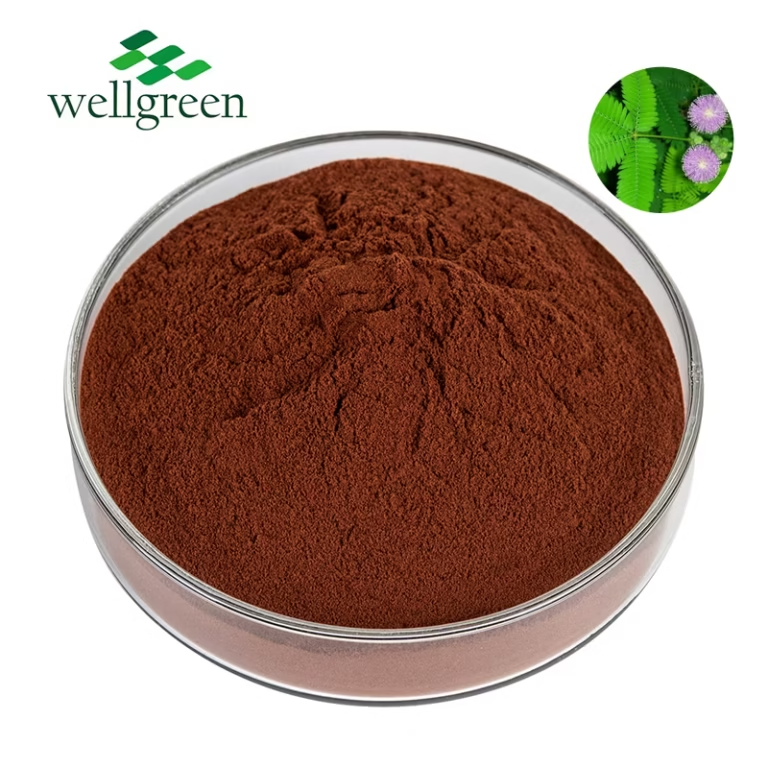
The root of the species Mimosa tenuiflora, commonly known as quebracho blanco, have been used for generations in indigenous medicine across the Americas.
Ethnobotanical studies demonstrate the efficacy of M. tenuiflora compounds in treating a broad range of ailments, including inflammation.
Traditional healers employ the plant material in diverse forms such as here teas to alleviate conditions.
Some key properties of M. tenuiflora encompass antimicrobial activity, and it is also thought to possess sedative properties.
Phytochemical Analysis Mimosa tenuiflora Root Bark Extracts
This study focuses on evaluating the phytochemical profile of Mimosa tenuiflora root bark extracts. The isolation methods employed involved multiple solvents, including water. The resultant extracts were then subjected to a battery of analytical techniques such as gas chromatography-mass spectrometry (GC-MS) to identify the predominant phytochemical molecules. Preliminary results reveal the presence of a array of secondary metabolites, including alkaloids, which are known for their therapeutic properties. This comprehensive phytochemical analysis aims to provide valuable insights into the benefits of Mimosa tenuiflora root bark as a source of herbal remedies.
Historic Uses and Potential Medicinal Benefits of M. tenuiflora Root Bark
M. tenuiflora, a tree renowned for its remarkable root bark, has been employed in traditional medicinal practices for centuries. Indigenous communities have long acknowledged the medicinal properties of this valuable resource. The root bark is customarily prepared and administered to alleviate a spectrum of ailments, including inflammatory conditions.
Contemporary research is beginning to uncover the promise of M. tenuiflora root bark in delivering medicinal benefits. Studies have indicated that certain compounds present in the bark may possess antiviral properties, contributing its potential to neutralize a diverse array of diseases. Moreover, preliminary research suggests that M. tenuiflora root bark may also possess brain-boosting effects, though more thorough studies are needed to confirm these findings.
Pharmacological Activity of Mimosa tenuiflora: A Review of Root Bark Studies
Mimosa tenuiflora, commonly referred to as the jurema shrub, has a extensive history of cultural medicinal application in South America. The root bark of this species is particularly valued for its diverse therapeutic properties. Numerous studies have analyzed the potential actions of M. tenuiflora root bark, revealing a range of constituents with significant biological activity.
- One domain of particular attention is the immunomodulatory efficacy of M. tenuiflora root bark extracts.
- Initial findings suggests that these extracts may influence the pain response, potentially providing alleviation from various inflammatory conditions.
- Additionally, studies have suggested that M. tenuiflora root bark may possess cellular protective properties, which could play a role to human health by counteracting oxidative stress.
The complex nature of M. tenuiflora root bark composition and its possibilities for therapeutic treatments warrant further research. As research advances, a more comprehensive understanding of the pharmacological effects of M. tenuiflora root bark may emerge, possibly leading to the development of novel and effective therapeutic interventions.
Extraction and Characterization of Pharmaceutically Active Compounds from *M. tenuiflora* Root Bark
This research focuses on the extraction of bioactive compounds from the root bark of *M. tenuiflora*. Multiple extraction methods, utilizing aqueous solutions, will be employed to isolate a variety of extracts. The analysis of these extracts will involve assays like chromatography and structure elucidation. The therapeutic effects of the isolated compounds will also be evaluated using cellular systems.
This project seeks to identify and characterize effective substances from *M. tenuiflora* root bark with potential uses in medicine.
Exploring the Anti-inflammatory and Antioxidant Properties of Mimosa tenuiflora Root Bark
Mimosa tenuiflora, commonly known as the Siberian tree, is a species native to tropical regions. Recent research has focused on its {potentialuses for human health, particularly concerning its immunomodulatory and radical mitigating properties. The root bark of Mimosa tenuiflora is a rich source of bioactive compounds such as phenols, which have been shown to exert potent actions against oxidative stress.
- Studies have demonstrated that extracts from Mimosa tenuiflora root bark can effectively reduce the production of inflammatory molecules in both *in vitro* and *in vivo* models.
- Furthermore, these extracts have exhibited notable protective effects by trapping harmful free radicals, protecting cells from damage.
These findings suggest that Mimosa tenuiflora root bark holds promise as a {naturalsupplement for various inflammatory and oxidative stress-related conditions. However, further research is needed to fully elucidate its mechanisms of action and optimize its therapeutic potential.
